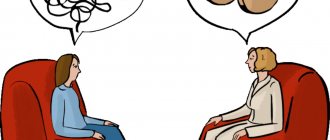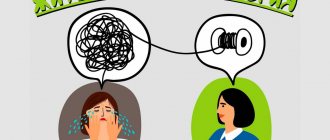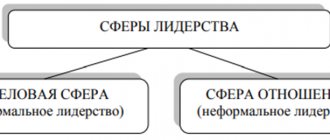Psychology emerged as an independent science in the middle of the 19th century. But a completely logical question arises: didn’t there exist psychological phenomena such as stress and neuroses before that, didn’t people communicate and conflict, didn’t there exist personal problems? Were. But this was in the nature of folk wisdom and observations. Before scientific psychology there was everyday psychology.
What is everyday psychology
Everyday psychology - facts obtained through personal observations. This is a subjective understanding of the psychological patterns and characteristics of the world. In another way, everyday psychology is called wisdom.
Sources of everyday psychology:
- everyday communication and interaction;
- Team work;
- people who meet along the path of life.
Examples of everyday psychology: rituals, traditions, folk tales, sayings, proverbs, legends, beliefs and other folk art. Many public pages on the social network VKontakte or websites on the Internet are the result of everyday psychology. That is, this is someone’s personal experience, everyday observations, the story of the life or success of this particular person. Nowadays it is fashionable to understand psychology and talk about self-improvement.
Everyday psychology has an arsenal of tools. For example, art. Through paintings, music, books we get to know the inner world of other people. Each viewer develops his own subjective idea of the author and his life. No terms or theories - only everyday psychology and personal perception. But the main method of everyday psychology is “trial and error.”
Everyday psychology is personal experience and ways of living that suit one person. This is exactly the case when we say “I do this, but it’s not a fact that it will suit you.”
Thanks to everyday psychology, a person knows how to communicate with his own parents, friends, sisters and brothers. However, without certain scientific knowledge, a person does not know how to behave with a new acquaintance. For example, children who are accustomed to manipulating their parents with the help of tears are at a loss when this technique does not work on another adult.
Good everyday psychologists are drivers, security guards, bartenders. They communicate with a large number of people every day, listen to their problems and draw appropriate conclusions.
Structure of mental phenomena
Mental processes
Mental conditions
Mental properties
Cognitive Sensation, perception, representation, memory, imagination, thinking, speech, attention
Elation, depression, fear, vigor, etc.
Direction, temperament, abilities, character
Emotional excitement, joy, indignation, anger, etc.
Strong-willed
making decisions, overcoming difficulties,
struggle of motives, managing one’s behavior
Mental processes
act as primary regulators of human behavior. Ps processes have a definite beginning, course and end, i.e. have certain dynamic characteristics, which include parameters that determine the duration and stability of the mental process.
On the basis of mental processes, certain states are formed, knowledge, skills and abilities are formed.
In turn, mental processes are divided into three groups: cognitive, emotional and volitional.
Cognitive mental processes include mental processes associated with the perception and processing of information. These include sensation, perception, representation, memory, imagination, thinking, speech, attention. Thanks to these processes, a person receives information about the world around him and about himself
Have you noticed that some events remain in your memory for a long time, while others you forget about the next day, and other information may go unnoticed by you. This is due to the fact that any information may or may not have an emotional connotation, i.e.
may or may not be significant. Therefore, along with cognitive processes, emotional mental processes are distinguished as independent ones.
We have the right to believe that if a certain event or phenomenon evokes positive emotions in a person, then this has a beneficial effect on his activity and condition, and, conversely, negative emotions complicate activity and worsen the person’s condition. However, there are exceptions.
For example, an event that causes negative emotions increases a person’s activity and stimulates him to overcome the obstacles that have arisen.
Such a reaction indicates that for the formation of human behavior, not only emotional, but also volitional mental processes are important, which clearly manifest themselves in situations related to decision-making and overcoming difficulties.
Sometimes they are identified as an independent group - unconscious processes. It includes those processes that occur or are carried out outside the control of consciousness.
Mental processes are closely interconnected and act as primary factors in the formation of mental states.
Mental conditions
characterize the state of the psyche as a whole. They have their own dynamics, which are characterized by duration, direction, stability, and intensity.
At the same time, mental states influence the course and outcome of mental processes and can promote or inhibit activity.
Mental states include such phenomena as elation, depression, fear, and vigor.
The next class of mental phenomena - mental properties of personality -
characterized by greater stability and greater constancy.
Under the mental properties of personality
It is customary to understand the most significant personality characteristics that provide a certain quantitative and qualitative level of human activity and behavior. Mental properties include orientation, temperament, abilities, character. The level of development of these properties, as well as the peculiarities of the development of mental processes and the prevailing (most characteristic of a person) mental states determine the uniqueness of a person, his individuality.
The phenomena studied by psychology are associated not only with a specific person, but also with groups.
Mental phenomena associated with the life of groups and collectives are studied in detail within the framework of social psychology.
Thus, the subject of psychology is the psyche and mental phenomena of both one specific person and mental phenomena observed in groups and collectives.
What is scientific psychology
Scientific psychology is material obtained through experimentation and research. Psychology in scientific terms and theories.
Sources of scientific psychology:
- books, scientific articles and other publications;
- experiments;
- teachers and mentors passing on theoretical experience (university studies in psychology).
The basis of scientific psychology is everyday psychology. Only after noticing something in practice do scientists decide to find a scientific explanation and determine the scale of the process.
Scientific psychology provides general guidelines for interaction. For example, it is known that all people are infected by the emotions of the group; Every person’s brain reacts by increasing their mood to a forced smile. And bright colors excite the psyche of each individual, cold shades make you sad, etc. This means that you can safely use these techniques in everyday life.
Differences between everyday and scientific psychology
The scientific type analyzes the similarities and differences between the two types of psychology. But among the studies it is impossible to find a single list of differences. However, general points can be highlighted:
- Object of study. Scientific psychology studies mental processes, everyday psychology studies a specific person or condition. For example, everyday psychology says that all people are different, and scientific psychology explains this by the characteristics of the mental system (temperament).
- Generalization. Everyday psychology describes specific people and specific conditions. Often this is abstract and figurative in nature or represented by a stereotype. Scientific psychology generalizes, classifies, systematizes.
- A way to gain knowledge. Everyday psychology uses only unorganized observation and introspection. Scientific psychology uses a lot of tools: specially organized observation, experiment, tests, surveys, diagnostics and more.
- Method of knowledge transfer. Everyday psychology is transmitted mainly orally, for example, from grandmothers to grandchildren. Or through folk art. Scientific psychology is transmitted through specialized literature, textbooks, and universities.
- Facts, arguments, awareness. Everyday psychology does not provide point-by-point explanations. The person simply says that he suddenly realized something or simply knows that it works. Scientific psychology will explain why this works: what hormones are turned on, what lobes of the brain are involved, what mental property is used.
- Language. Scientific psychology operates with terms and concepts. Everyday psychology explains something “in its own words,” in a simple way.
Similarities between scientific and everyday psychology
The similarity between scientific and everyday psychology is that they help people understand each other. The result of combining two areas of psychology is practical psychology.
What does the unification of scientific and everyday psychology look like:
- The study of the influence of a group on an individual and individuals on a group (psychology of management and leadership).
- Determining the features of interaction between two groups or two people.
- The study of human uniqueness, behavioral characteristics (personality psychology).
Practical psychology begins with everyday observation and ends with scientific study. And at the third stage, on the contrary, the put forward theoretical hypothesis is tested on special cases in everyday life, the breadth of its application is noted.
Everyday and scientific psychology are important to each other. These are mutually complementary types. Everyday psychology is everyone’s personal experience. Scientific psychology is the generalized experience of the entire society. But is it really possible to draw general conclusions about the laws of society without knowing the psyche of each individual? And it is also impossible to understand systematic knowledge without experiencing it personally in practice. Can a teacher only follow the material written in the textbook, ignoring the environmental conditions and characteristics of the very children with whom he interacts? So, in essence, we are talking about theoretical and practical psychology.
Stage of elementary sensory psyche
In Russian psychology, the opinion has long been established that animal behavior is essentially instinctive behavior. Instincts are also associated with those forms of behavior that are acquired by specific animals during the course of their lives.
^ Instinctive behavior is a species-specific behavior that is equally directed in all representatives of the same animal species. As a rule, instinctive behavior is determined by biological expediency and consists in ensuring the possibility of existence (survival) of a specific representative or species as a whole. But it would not be entirely correct to say that the behavior of an animal is only genetically determined and does not change throughout life.
The conditions in which an animal finds itself are constantly changing, so individual adaptation exists in all animals.
A feature of animal behavior in the early stages of development is that it is always stimulated and controlled by individual properties of objects affecting the animal. For example, as soon as an insect falls into a web, the spider runs towards it and entangles it with its thread. What causes this spider behavior? The vibration of the web transmits the vibration of insect wings. As soon as the vibration stops, the spider stops moving towards its victim, but as soon as the vibration is resumed, the spider begins to move again. The fact that it is the vibration of the web that determines the behavior of the spider is proven by the following experiment: a vibrating tuning fork brought to the web causes the spider to move, while at the same time the vibration of the wings of a fly, grabbed with tweezers and brought directly to the spider, causes the spider to flee.
Several questions involuntarily arise. Firstly, what explains the incentive effect of certain properties of objects and, secondly, why is any animal behavior possible at all? The answer to the first question is simple: the vibration of the web is consistently associated with the absorption and assimilation of food by the spider - an insect caught in the web. Consequently, such behavior of animals has a biological meaning, since it is associated with the satisfaction of biological needs, in this case with the absorption of food.
It should be noted that the biological meaning of the influence of objects that excite and direct the behavior of an animal is not constant, but changes and develops depending on the specific living conditions of the animal and the characteristics of the environment. If, for example, you start feeding a hungry toad worms, and then put a match and a lump of moss in front of it, it will grab the match, which, like worms, has an elongated shape. But if you first feed the toad spiders, it will not pay attention to the match and will grab the moss. Round shapes now took on the meaning of food for her.
This stage of development, characterized by the fact that the behavior of an animal is stimulated by individual properties of an object due to the fact that they are associated with the implementation of the basic vital functions of animals, is called the stage of elementary behavior. Accordingly, this level of psyche development is called the stage of elementary sensory psyche.










